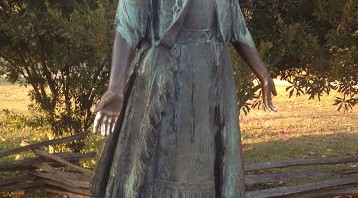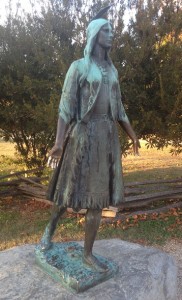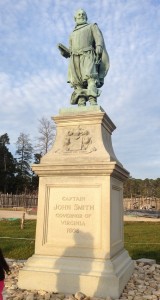So I just came back from a rather inspiring visit to Jamestown, and now I want to write a revisionist story about Pocahontas. Why?
Well, it turns out the history we learned as kids and the Disney movie are both BS. Pocahontas did not have a love affair with John Smith. The colonists did not come here looking to conquer, in fact Jamestown was picked as a place least likely to offend anybody for its distance from fresh water. They came because they were non-first-born who were left out of the estate, with no prospects save the possibility of distant lands. Neither did they starve because of some foolish drive for gold at the expense of preparing for winter.
And the colonists were good hunters, too. They may have been gentlemen, but the gentlemen of that time were both skilled soldiers and hunters. So much so, that the local king wanted one as his personal hunter at his capital. If there’s anything we can point to, it was the local tribal king who tried starving the colonists out by holding their stockade under siege: anyone caught going hunting outside the walls was shot.
Pocahontas, then, becomes the story of his 11 year old daughter, feeling sympathy for the plight of these newcomers. She probably went against her father’s wishes to bring them food during the winter they starved the most. And her efforts helped keep that first colony alive.
Later, she married John Rolfe, who was the first to successfully cultivate and export tobacco to England. Their marriage led to peace with the local natives and their king, and together these ensured the long term sustainability of Jamestown. He brought her to London later, where she unfortunately died in her 20s, likely from foreign disease.
The story of John Smith is an extra but related story. It’s doubtful whether he had anything to do romantically with Pocahontas, but he was governor during the starving years. His non-noble birth made him looked down on by the other colonists but also made him an effective, no-nonsense leader. He coined the phrase “he who works not, shall not eat” and instituted stiff laws that helped the colony survive through those times.
So what do we see in all this? Like a conceived egg, we see all the DNA of the future United States all in this one colony. Disinherited immigrants. Working class rising to leadership positions. Strained relationships with the natives. Both a capacity for hard collective work, and individual innovation and enterprise.
And we also see some greater spiritual issues: the mercy of the heavens, in the sympathy of a little girl, allowing the continuance of life. A girl’s rebellion against her royal father, and her love for the new and the future and what it could bring, even if it would ultimately kill her. And a father’s ultimate unconditional love for his daughter, which reverses his previous stern edicts.
Obviously, this treatment raises a lot of questions. That’s the point. I need to do more research. But it’s these very questions I want to commit to, and that’s the point of writing this treatment, before the memory of my recent visit to Jamestown fades away.




It’s also worth pointing out that after the Civil War, history books were slowly rewritten to make Plymouth Rock the birthplace of the United States. Which isn’t true, Jamestown predates it by 13 years. But it’s a pity really that we don’t have a unified history of our past, as by historic standards these colonies arose simultaenously.